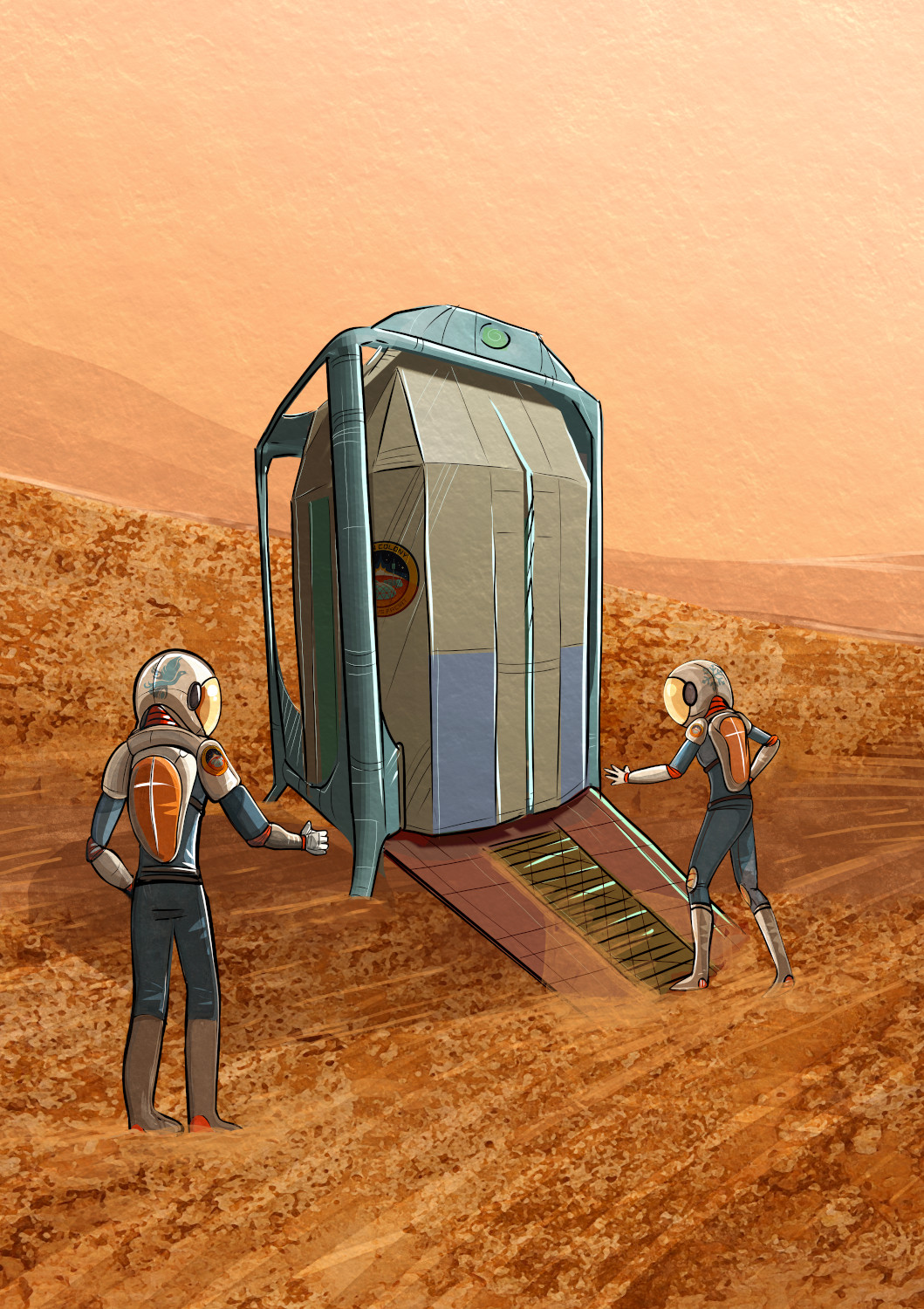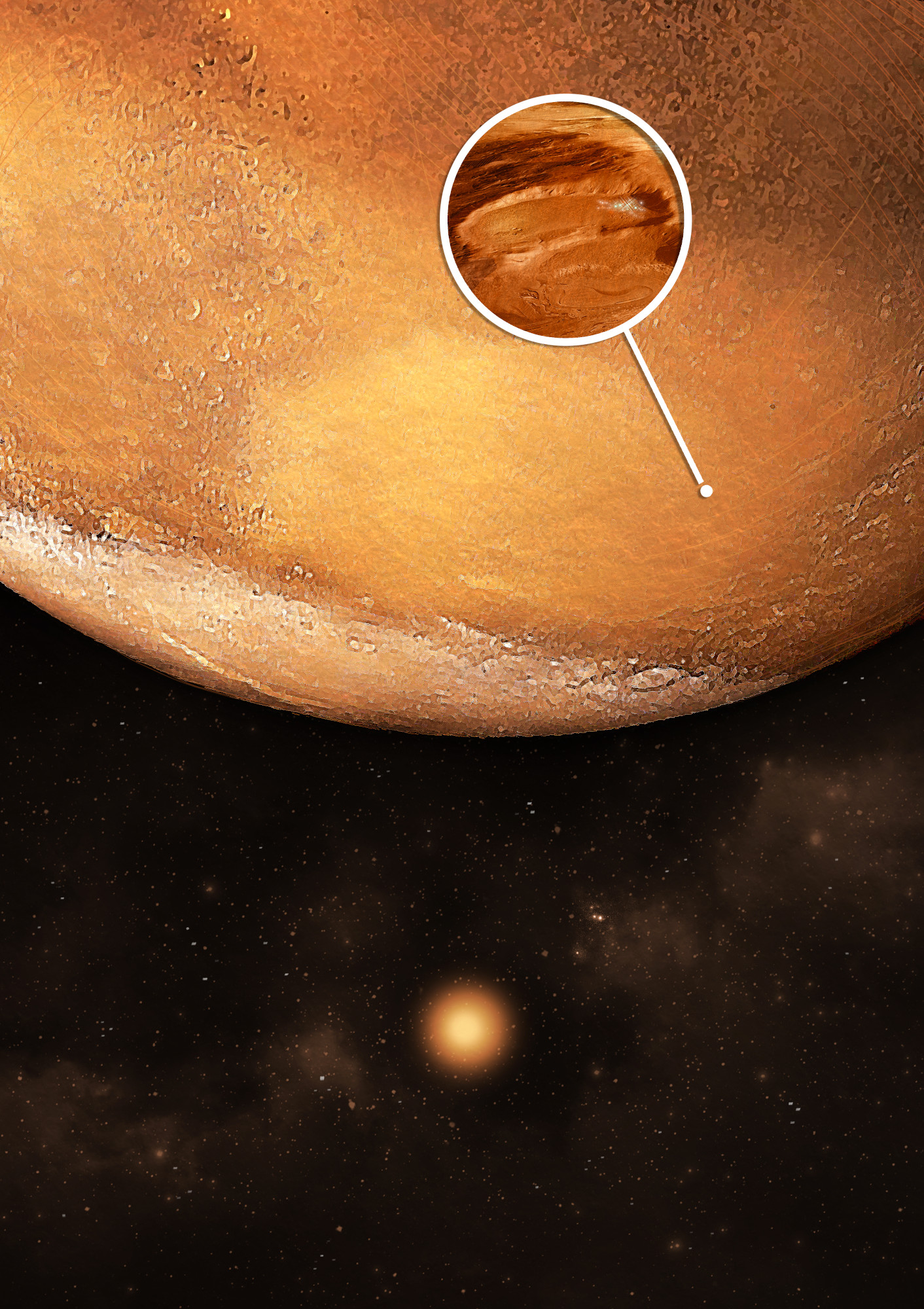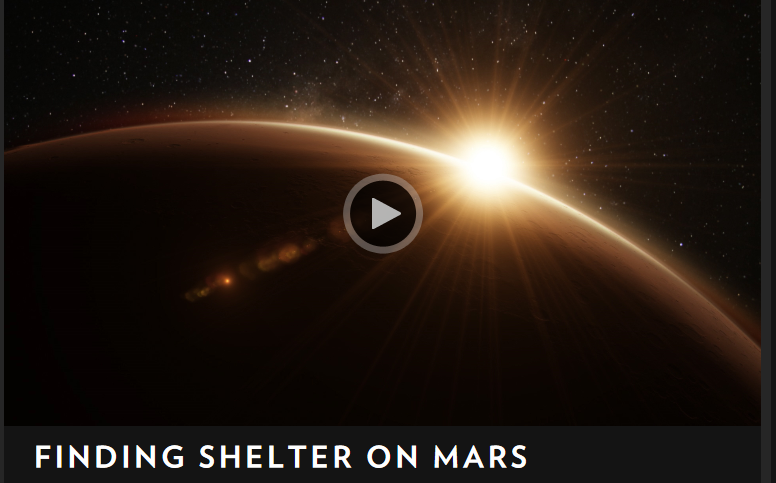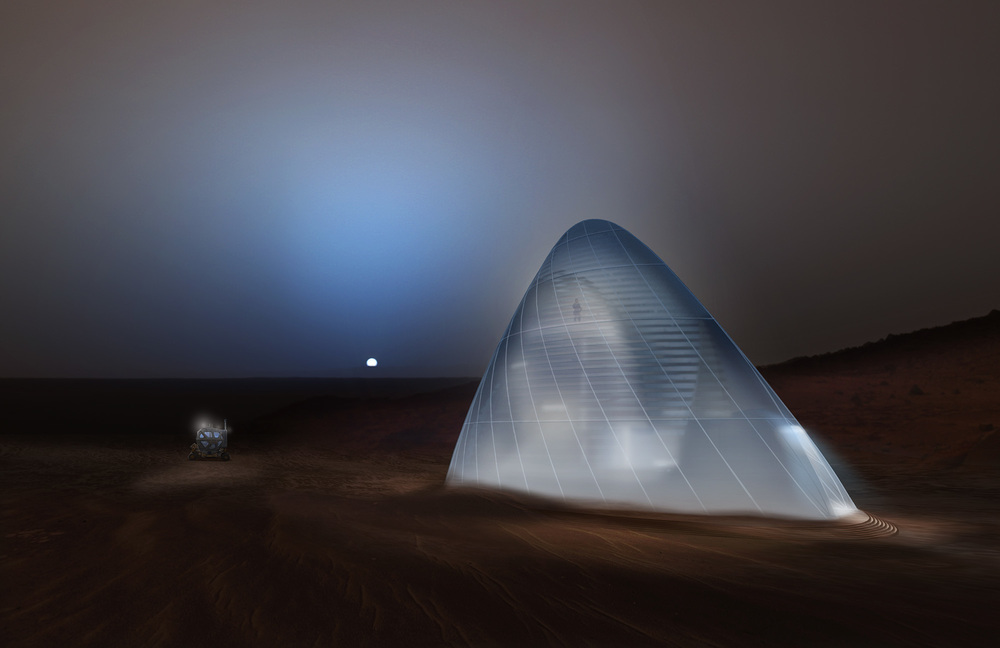“Would you rather…” said Cas, “walk from the Forest to our hab with a bag from a loo on your head or walk from here to the ObsDome without a helmet?”
Ori smiled. Their mother had taught them this game. “That’s easy,” she said. “Here to the ObsDome without a helmet.”
“Seriously?” said Cas. “You’d never make it. At least with poop-head you’d still be alive.”
“Well,” said Ori, “Without a helmet, I’d have 15 seconds before I pass out. I’ve done that before, and it’s no big deal. Then I’d have a couple minutes before I’d die, and you or someone would carry me into the airlock in that time. That’s way better than poop-head.”
Cas had to admit that her sister’s reasoning was sound.
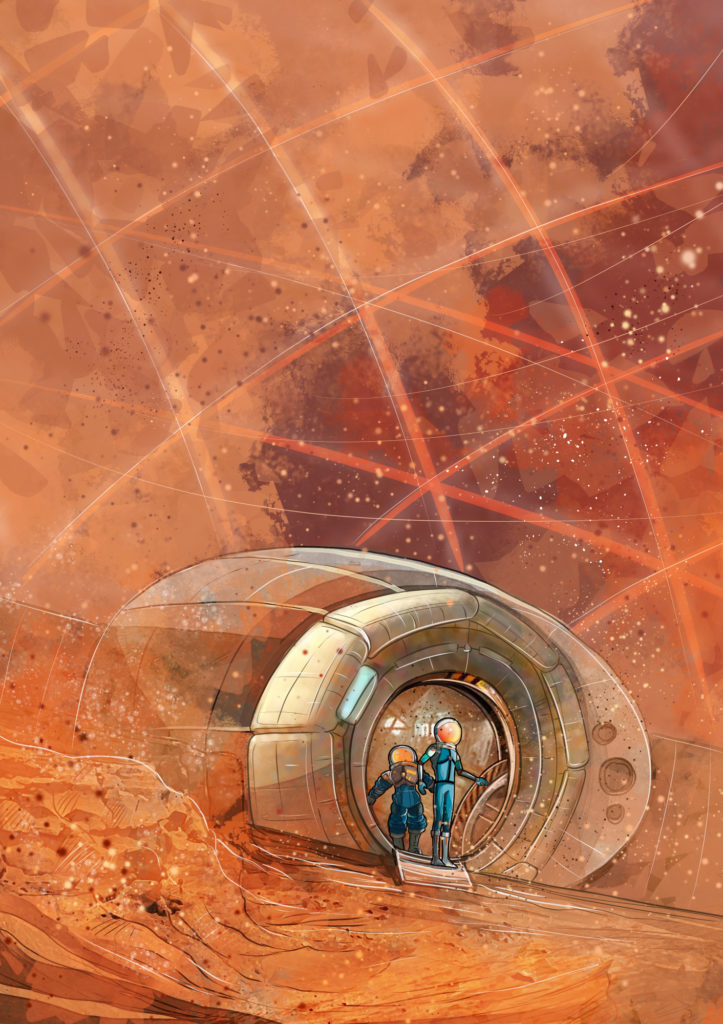
Shelter: Generation Mars, Book Two
Coming in March
(image: Luis Peres)



